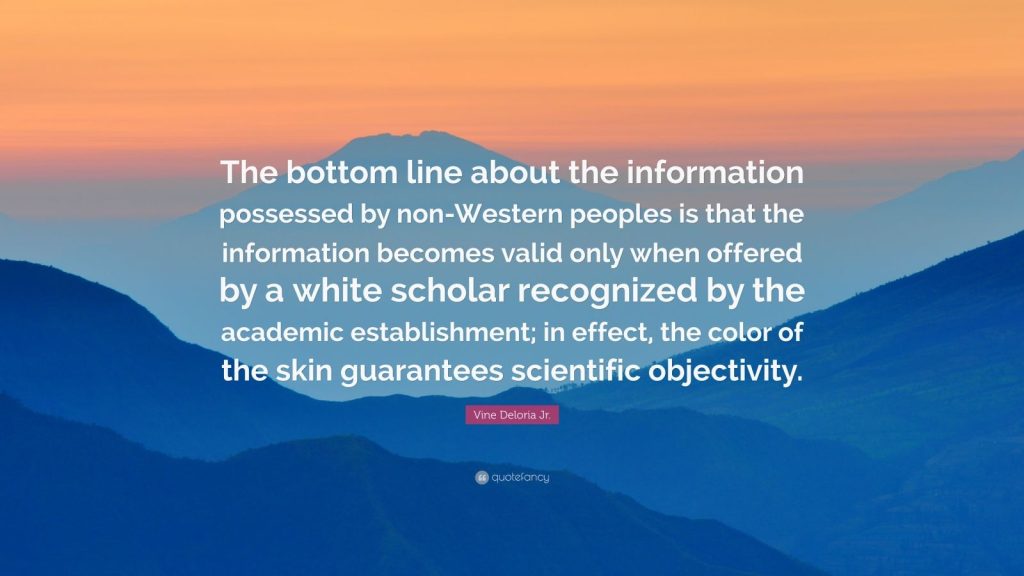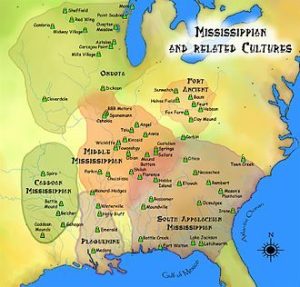4 Massacre Mangle Destroy (with Content Warnings)
2022: The Invisibles paint the whole picture and write the whole history so you and I would never go looking for them. We would not know—and we don’t know they exist. It’s pretty clever to make yourself invisible.
Well, it worked.
If we did look and did find them, we’d expose them for the thieves and murderers they are and have been for centuries. They are THE MOST DANGEROUS PEOPLE ON EARTH!
It’s all a game to them. It was their goal: and wow, how stupid we look, they think.
They use us, they use our gullible and trusting human nature. They use history to dumb us down. They’ll have us blame Satan or some other evil that they created themselves! Voilà – there – poof!
We are running circles and looking for someone to blame for everything wrong in this world. The truth is: it’s them, and it has ALWAYS been them.
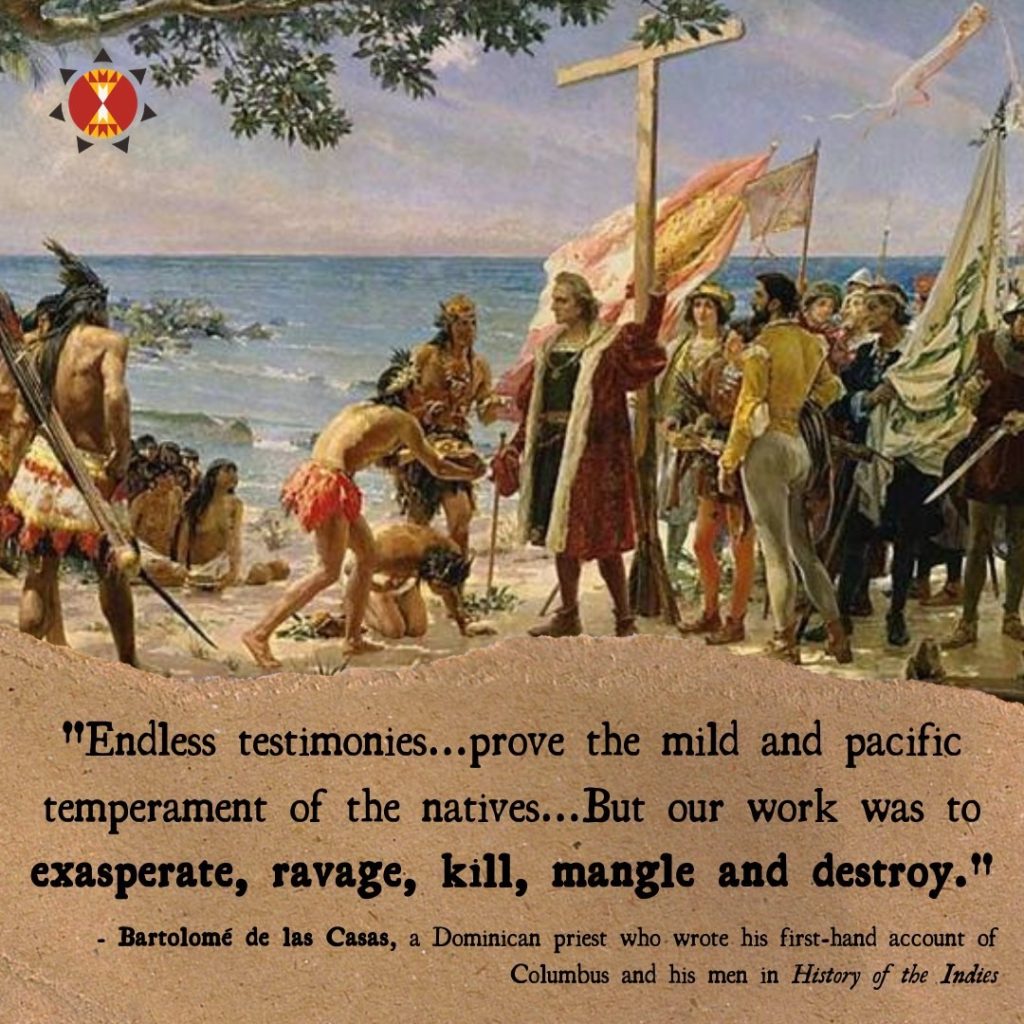
“At the time of first contact, around 1500CE (Common Era), Indian populations in North America had numbered, according to sober estimates, around 5 million. There were more than 500 distinct tribes spread over the entire continent—from the Florida Keys to the Aleutian Islands. The deserts of the American Southwest hosted some of the most advanced societies, who built cities that still stand today. At the confluence of the Missouri and the Mississippi, where St. Louis now stands, was a city of more than twenty thousand (in Cahokia). Along the resource-rich eastern seaboard, the coast was populated, without break, from Florida to Newfoundland. But four hundred years of warfare, disease, and starvation had taken its toll. According to the US census, there were only 237,000 Indians in the United States in 1900, a twentieth of the population at its peak. The story of the land parallels that of the population. The United States comprises 2.3 billion acres. By 1900, Indians controlled only 78 million acres, or about 3 percent.” —The Heartbeat of Wounded Knee, published by Riverhead Books. Author David Treuer is Ojibwe, from the Leech Lake Reservation in northern Minnesota.
LOOK FOR MASS GRAVES – that is evidence of THE INVISIBLES.
HiSTORY/HeRSTORY: What happens when historians massacre the truth?
It took me several years to realize with HISTORY we’ll have to completely start over and erase any ancient history, the beginnings of civilizations, Empires, Royals, slavery, the colonization and founding of America and the demise and capture of the Turtle Island Indigenous communities. It’s bogus.
Remember how John Trudell called us all Blue Indians. HE saw their system and tried to warn us.
For academics and scholars who write history, they definitely knew about the extermination of First Nations Indigenous people, and their murders and their enslavement, but conveniently chose not to write about it. They knew the evidence was right there all along, but they chose not to document it. (That is how they use our naivete to dumb us down.)
‘I agree that much of this history was hiding in plain sight (and in many published documents and sources that historians had used for decades to research colonial history in New England.’ —Ohio State University Professor Margaret Ellen Newell, History Department (Her book, Brethren by Nature: New England Indians, Colonists, and the Origins of American Slavery, received the 2016 James Rawley prize for best book on the history of race relations in America, Cornell Press.
(Her response to an email inquiry by author Trace Hentz) *
https://www.cornellpress.cornell.edu/book/9781501705731/brethren-by-nature/
All that bloody history was right there? Why ignore it or omit it or not write any of it??
Let’s guess: To hide crimes against humanity? Sorcery? Murder? Theft? Looting? Body counts? Future Reparations? Yes, and recognizing your ancestors were probably the invader/colonizer who committed genocide and mass murders. (Writing up massacres across America would be messy after so many centuries but yes, some new writing is finally happening.)
Yes, it was a crime against humanity and it was murder then it became murdering the truth. Here is one example: It was so simple (too simple) to use “disease” for massive die-offs of Indian people, instead of calling it what it was: germ warfare. Just look at Lord Jeffery Amherst. (Right now I know scholars investigating (many imported British) poisons that produced massive deaths when victim’s bodies looked like small pox had killed them… clever, right?) Poisoned they were. By the way, there was contact before the British and Spanish made their journeys across the Atlantic to plant their flags… Indigenous People survived that earlier contact but someone merely forgot to jot it down for future historians, I guess.
Among the damning evidence (of germ warfare) are letters written in 1763 between officers of the British military detailing plans to send a plague among the “vermin” to eradicate them.
In 2020 the general public needs to know about this massacre of truth and people …and look with a critical eye at the “scholars” who call themselves historians.
History has failed all of us in a big way. Certain men gave themselves the right to write and declare whatever they wanted—and who was left to question them (such as an Indigenous eye-witness) or stop their version of his-story that clearly massacres the truth?
These same men of history (who declare the pilgrim pioneer as heroic) are as guilty as the mass murderers of a century ago. They kill us over and over hiding what happened on this soil. We can see how that worked. And we also see how racism and division grew in its roots.
This is exactly how history becomes a problem. Who in American even knows the truth about Columbus, the slave trader? I get it. Massacre the truth, too. Sneaky, right? This is how they use sorcery and magic to get the result and the lie they wanted.
The INVISIBLES and GERM WARFARE
(excerpt) … “Amherst’s tactics created an epidemic among the Cherokees in 1783 which helped George Washington’s forces and ended the Cherokee’s resistance. The Masonic-based Smithsonian Institution has acknowledged Amherst’s use of biological warfare, “During the bitter fighting in 1763-1764 General Jeffrey Amherst ordered that the Indians around Fort Pitt be infected with gifts of smallpox (laden) blankets. The Indian uprising failed, and Fort Pitt was easily relieved after a smallpox epidemic broke out among the warriors besieging the fort.” The U.S. Army repeated Amherst’s biological warfare tactics by distributing smallpox-infected blankets to the Mandans at Fort Clark in present day South Dakota. This led to the smallpox epidemic of 1836-40. The Mandan, out of about 2,400 there were only thirty-one survivors. The U.S. Army repeated this deadly tactic by introducing blankets laden with the same disease to the Missouri River Mandans during the 1830s.
(From Depopulation by Government Edict, by Deanna Spingola January 28, 2010, http://www.renewamerica.com/columns/spingola/100128)
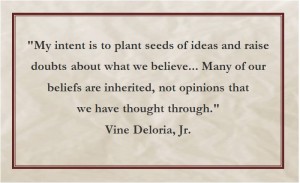
WHO DISCOVERED WHAT?
Guðríður Þorbjarnardóttir, born around 980 in Iceland, traveled to what is now called America (most likely close to New York) around the year 1000 AD. While there, she gave birth to a son, Snorri, before returning home. Aside from a couple of Icelandic sagas that tell the story of her travels, she would have largely remained a footnote in history, but in 2000, the Icelandic government launched a campaign to credit the Viking explorer Leif Erikson with the “discovery” of America, 500 years before Christopher Columbus’s arrival—and began promoting Þorbjarnardóttir and Snorri as its poster mother-and-child. The Icelandic government’s story surrounding Guðríður Þorbjarnardóttir is problematic, indicative of “an attempt to align Iceland’s national identity with imperialist nations” and “a small state’s inferiority complex.”
“This complex has been much reflected on by anthropologists as Iceland, having been a colony of Denmark for roughly 500 years, used racist discourse to try to distance themselves from being viewed as belonging to others similarly oppressed,” Iceland artists Björnsdóttir and Gunnlaugsdóttir said.
https://hyperallergic.com/728392/how-a-racist-statue-in-iceland-ended-up-inside-a-rocket-ship/
WARNING! GRAPHIC VIOLENCE
It saddens me that history is not taught with truth, at least here in the U.S. —Bill Laughing Bear, Alaska
FROM HIS WRITING on the BIG WOBBLE:
And the biggest earthquake Mr. Springer imparted on my high school class shocked most of us like a 9.0 earthquake.
He explained, “Do not just look at the other governments of the world and think they are the evil ones and we are the pure ones.” He went on to say that during WWII, he had served in the South Pacific. His job, he told us as he sobbed, was to kill Japanese prisoners. He stated he was part of a small detail of soldiers who were given orders to commit an evil beyond belief. He stated what his group of men were called but it has been so many years I do not recall its identification. He went on to say that as the war went on, the U.S. was capturing so many prisoners they could not handle them all. So, his group’s job was to have them stand together while he and some others took machine guns and mowed them down. Then they were buried in mass graves dug out with bull dozers and covered with the dirt with these same pieces of equipment. This was to hide the evidence.
He went on to say the U.S. was not the only one of the countries that fought the Nazis and Japanese that did such. And with tears like I have never witnessed since, he said, “I have to live with this. I am haunted by this evil I did to men who had surrendered. I can still see their terrified faces as I mowed them down.” He said, “I just hope in death this will finally leave me alone.” I do not believe there was one of us that day in class who did not have tears streaming down their faces. And he stated, “you will never read about this war crime I was party too, and if by chance you do, it will be reputed as a lie.”
So… here’s to you Mr. Springer. 2022/LINK: http://www.thebigwobble.org/2022/04/another-powerful-letter-from-alaska.html
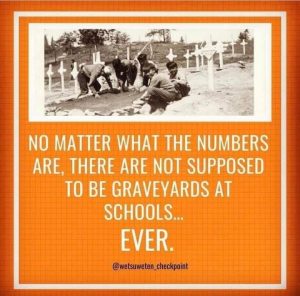
MURDER
The death of students at Kamloops residential school was no secret among the First Nations whose children were forced to go there. Finding out how they died is a challenge, but the evidence that does exist reveals a record characterized by the indifference of authorities, who saw the children as a means to an end that had little to do with their well-being. The National Centre for Truth and Reconciliation, the repository of residential school records gathered by the Truth and Reconciliation Commission, found evidence for 51 fatalities at the institution. There are likely more.
More on unmarked graves:
newsinteractives.cbc.ca /longform/kamloops-residential-school-children-dead
On Psychopathy, Power, Empire And Ego
I mean, think about it. What kind of person seeks power over others? Psychologists have been saying for years that psychopaths routinely ascend to power not just in political spheres but in business, academia and law enforcement as well. The competition-based models that shape our society tend to reward those who are willing to do whatever it takes to get to the top, and the type of person who is willing to do whatever it takes to get to the top happens to be the type of person who enjoys the power which comes from being at the top. When all your systems inevitably reward psychopaths with power and money, you will necessarily find yourself ruled by psychopaths. Our lives are directly affected by the fact that psychopaths consistently both seek and attain ascension into the halls of power. But our lives are also directly affected in countless ways by the same dynamics of power which are especially manifested in the worst psychopaths. —Author Caitlin Johnston

Big Heavy Hard History
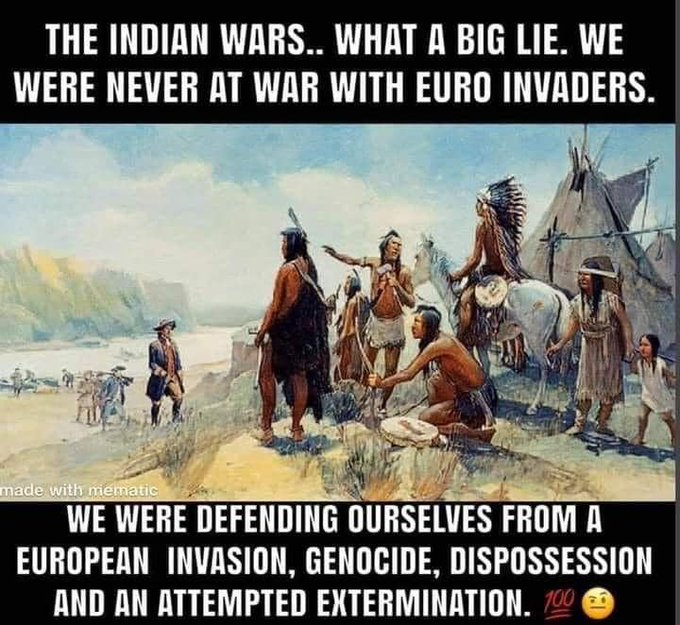
Motives at Lake Mohonk | Mahpíya Lúta (Red Cloud)
“The early leaders of the Indian Rights Association (IRA) had a twofold purpose: to protect the interests and general welfare for the Indians, and to initiate, support, or oppose government legislation and policies designed to ‘civilize’ the American Indian. By the term ‘civilize,’ the IRA in 1882 meant measures designed to educate, Christianize, make economically independent, and absorb the Indians as individuals into American society.” (Indian Rights Association Papers: A Guide to the Microfilm Edition 1864-1973, 1975, page 1.)
No…they wanted more land and had to figure out the fastest way to do it and ultimately chose genocide to justify murder. It’s the same story over and over and over – for centuries and on every continent.
Motives??… I often wonder about that.
The Indian Rights Association had a motive. A big one. Indians had no right to exist as they had for thousands of years. Indians were in the way, an impediment to progress and the goals of “Manifest Destiny” and westward expansion. Back then Indians were supposed to just blend in and disappear. How convenient.
President Thomas Jefferson, The Papers of Thomas Jefferson, December 29, 1813
“This unfortunate race, whom we had been taking so much pains to save and to civilize, have by their unexpected desertion and ferocious barbarities justified extermination and now await our decision on their fate.”
In 1851, the United States paid out more than $1 million in bounties for Indian scalps. (We’d be dead Indians then.)
Like I said: look at Dark History… (PA history from pcgazette.com)
WARNING: DISTURBING CONTENT
“In southern what is now Ohio, (Mohicans) set up an ideal Mohican community near the Pennsylvania border. These people had their own frame houses, picket fences, cattle herds, school houses in their language,” Professor Wrone wrote. “A hundred miles away, the frontiersmen in a Pennsylvania village decided the Mohicans were hostile. Now, these (Mohicans) were fundamentalist Christians, they were Moravian pacifists. The frontiersmen came in upon them suddenly and seized 96 of them and put them in a big barn. And while the Indians sang Christian hymns in their language and prayed for the souls of their captors, they were taken one by one to a blacksmith’s anvil and the Americans smashed their heads in with a maul. All 96 of them,” Professor Wrone said.
Over many years I did wonder how “they” (presidents and others) came to decide what to do with the Indians, other than collecting scalps of dead Indians or smashing their heads, or massacres, of which there were many. They had a conference and meetings? Yes. By the way, the IRA were not friends of the Indians, not even close. (Psychopaths simply breed more psychopaths over centuries.)
The Lake Mohonk Conference 1883–1916
Wealthy people often feel that they know what is best for poor people. From 1883 through 1916, a small group of wealthy philanthropists, who referred to themselves as Friends of the Indian, met annually to discuss American Indian policies. As wealthy men, they had access to Congress, to the President, and to high ranking members of the government. This meant that their recommendations carried more weight than that of the Indian leaders.**footnote below
The idea of having an annual meeting to discuss Indian affairs and then make recommendations to the government was initially the idea of Albert K. Smiley, a member of the Board of Indian Commissioners and a part owner of the Lake Mohonk Lodge (in upstate New York). The annual meeting took the name of its meeting place and was called the Lake Mohonk Conference.
In general, the conferences envisioned the transformation of Indians from savages to citizens by three means: (1) breaking up the reservations, (2) making Indians citizens and subject to the laws of the states, and (3) education of the young to make them self-reliant.
The men who gathered each year tended to be well educated, financially secure (most were considered wealthy) and had been born into the upper classes of eastern U.S. society. They often viewed their participation in the conference as a part of their larger Christian obligation to bestow the blessings of Christianity upon all of the under-developed people of the world. While these reformers were genuinely concerned about justice for Native Americans, they were unremittingly ethnocentric. To them, the Indian cultures—the tribal languages, values, religion, social models, communal ownership of the land, the aboriginal lifestyle—was an anathema to modern civilization.
The eastern philanthropists who met at Lake Mohonk had rather mystical faith in the value of private ownership. They felt that private ownership of property had the power to transform the Indians into people more like themselves. Believing in the sanctity of the private ownership of land, they had little understanding of Indian culture and little concern for the actual living conditions of Indians.
In their 1884 meeting, the Lake Mohonk Conference recommended that Indian education must teach the English language; that it must provide practical industrial training; and that it must be a Christian education.
The following year, Lyman Abbot, a well-known Congregational clergyman, called for the end to the reservation system. He told the Lake Mohonk Conference:
“It is sometimes said that the Indians occupied this country and that we took it away from them; that the country belonged to them. This is not true. The Indians did not occupy this land. A people do not occupy a country simply because they roam over it.”
Like most Americans at this time, he was apparently unaware that Indians had been farmers and had developed their land long before the arrival of the Europeans.
Speaking at the Lake Mohonk Conference in 1886, Philip C. Garret, a member of the executive committee of the Indian Rights Association, called for the destruction of the distinctions between Indians and non-Indians. This destruction is stopped by treaties and he asked that the treaties be set aside:
“If an act of emancipation will buy them life, manhood, civilization, and Christianity, at the sacrifice of a few chieftain’s feathers, a few worthless bits of parchment, the cohesion of the tribal relation, and the traditions of their races; then, in the name of all that is really worth having, let us shed the few tears necessary to embalm these relics of the past, and have done with them; and, with fraternal cordiality, let us welcome to the bosom of the nation this brother whom we have wronged long enough.”
In 1890, a group of Indian policemen had gone to arrest the Sioux Sitting Bull because of rumors that he had intended to attend the Ghost Dance at the Pine Ridge Reservation.
After a short skirmish, Sitting Bull was killed by Little Eagle (on December 15, 1890). At the next Lake Mohonk Conference it was reported that all of the policemen were Christian and Sitting Bull was pagan. According to the Conference:
It was the supreme struggle of Paganism against Christianity, and Paganism went down. That is the second reason why there is this wonderful progress in this religious movement.
The 1896 Lake Mohonk Conference called for the abolition of the tribal system and for Indians to become citizens. At this time, many Indians were not citizens and the only way that they could become citizens was to accept an allotment of land and to be eventually deemed “competent” by the Indian agent.
Occasionally, the Friends of the Indians did more than just talk about Indian issues. In 1902, the Mohonk Lodge was opened in Oklahoma to stimulate the art of the women in the surrounding tribes—primarily Kiowa, Comanche, and Apache. The store, first proposed by Christian missionaries at the Lake Mohonk Conference, provided the women with hides, beads, paints, and other materials at cost. When the items were completed, they were sold back to the store to provide the women with cash. In addition to new art items, some family heirlooms, such as cradles, were also sold to the Mohonk Lodge.
At their 1903 conference at Lake Mohonk in New York, they discussed: (1) the abolition of the Indian Bureau and all Indian agencies; (2) the extinction of all Indian tribal governments; and (3) the division of communal tribal land holdings among individual Indians.
While the philanthropists who met at Lake Mohonk strongly believed in the breaking up of the reservations through the allotment of the tribal lands to individual Indians, most Indians actively opposed allotment. In 1906, for example, the White River Ute expressed their displeasure with allotment by attempting to leave the reservation. The army made a strong show of force and “persuaded” them to return to the reservation under military escort. Speaking about the Ute situation at the Lake Mohonk Conference, the Commissioner of Indian Affairs recommended not feeding them:
“It was not the government’s fault that they took the course they did in order to get into a place where they could live in idleness and eat the bread of charity. If they persist in that course they will be made to understand what the word ‘must’ means.”
His words were met with a round of applause…
Toward the end of its existence, the Lake Mohonk Conference began to turn its attention to the Indian situation in Oklahoma. With allotment and statehood, the tribal governments were now powerless and the utopia envisioned as coming about through privatization had not materialized. Instead, the non-Indians’ greed had no limits. In 1914, Indian reformer Kate Barnard spoke to the group. As a result both the Lake Mohonk Conference and the Board of Indian Commissioners began to work for increased federal protection for the Oklahoma tribes.
At the same time, the Lake Mohonk Conference embarked upon an anti-Peyote campaign. They suggested that the federal prohibition of intoxicating liquors be expanded to include peyote. In this way more sanctions could be brought against the new Indian religious movement without the appearance of suppressing religion. The last annual meeting of the Lake Mohonk Conference of the Friends of the Indian was held in 1916. The conference organizer and resort owner, Albert Smiley, had died in 1912. Via: NATIVE AMERICAN NETROOTS SOURCE
Toward the end of the 19th century, the United States began to break up reservations and open them up for non-Indian settlement, formalized with 1887 General Allotment Act (also known as the Dawes Act). The idea of holding land “in common” was seen as uncivilized, un-Christian, and a barrier to civilization. Indians were first encouraged and then required to obtain individual ownership of land. The idea of owning land in severalty became almost an obsession of the late 19th century Christian reformers (IRA) who were convinced that such a policy would force Indians to become more American. Historian Clifford Trafzer, in American Indians/American Presidents: A History, reports: “By dividing tribal reservation lands into small parcels for individual Indians, reformers believed allotment would imbue Native people with respect for private—rather the tribal—property, and help Indians assimilate into mainstream culture.” The result of this policy was to force American Indians into poverty and to create wealth for non-Indians. American capitalists and large corporations acquired Indian resources.]
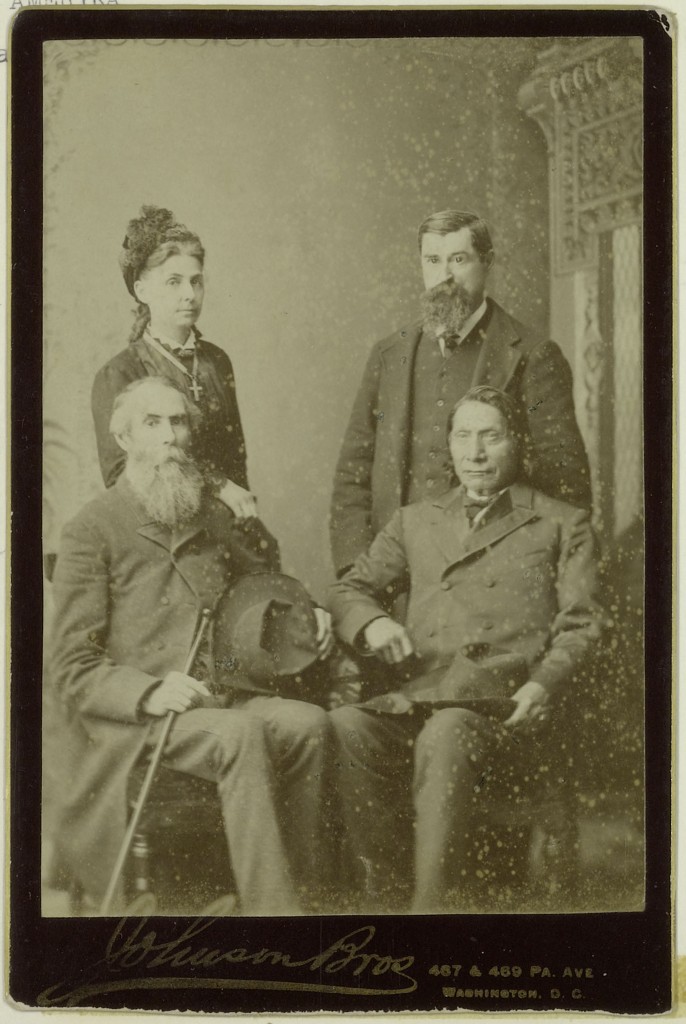 2022: I am STILL working on a research paper (and maybe book) about (my blood relative/distant cousin) Dr. Thomas Augustus Bland (seated left) who published the COUNCIL FIRE and ARBITRATOR newsletter for Indians and allies; his subscribers included Sitting Bull and Red Cloud, and other supporters of the Indian cause. Drs. Thomas and Cora Bland, Alfred B. Meacham and others disagreed strongly with the IRA motives and instead created the National Indian Defense Association (NIDA) formed in 1885.
2022: I am STILL working on a research paper (and maybe book) about (my blood relative/distant cousin) Dr. Thomas Augustus Bland (seated left) who published the COUNCIL FIRE and ARBITRATOR newsletter for Indians and allies; his subscribers included Sitting Bull and Red Cloud, and other supporters of the Indian cause. Drs. Thomas and Cora Bland, Alfred B. Meacham and others disagreed strongly with the IRA motives and instead created the National Indian Defense Association (NIDA) formed in 1885.
Under the Bland’s guidance, The Council Fire became a much more radical publication meant for Indian people themselves. Alfred B. Meacham and the Bland’s held to a radical minority position that was essentially in accord with the proposals brought to President Grant in 1869. The IRA approach to assimilation was grounded in the ideal of making good citizens of the so-called “undesirable” or “savage” class. To these “friends of the Indians” as a writer for The Council Fire sarcastically called them, “. . . the Indian was an obstacle . . . he must be got out of the way.”—George Manypenny, “How the Delawares Were Disinherited,” The Council Fire 9 (June 1886).
By way of a miracle, back in 2006 I had posted on Rootsweb that I was doing research on Dr. Thomas A. Bland, and (SHOCK) on June 11, 2016 (ten years later) I was contacted by Daniel G., who lives in California, who sent me the stunning photo of Cora Bland (back left), Randall, the interpreter (back right), and seated Dr. Thomas Augustus Bland with Oglala Chief Red Cloud. It is a BIG miracle because Dr. Charles Bland and I had never seen this photo before!
I knew it had to exist and voila, there it is! Dr. Bland did take Red Cloud to meet the Presidents of the United States! (Thank you Daniel)
ABOUT RED CLOUD
Lakota chief Red Cloud was an important figure in the 19th century land battle between Native Americans and the U.S. government. He successfully resisted developments of the Bozeman trail through Montana territory, and led the opposition against the development of a road through Wyoming and Montana for two years—a period that came to be known as Red Cloud’s War. Born in 1822 in what is now north-central Nebraska, Red Cloud (known in Lakota as Mahpíya Lúta) was an important Native American leader who fought to save his people’s lands. His parents named him after an unusual weather event. His mother, Walks as She Thinks, was a member of the Oglala Sioux and his father, Lone Man, was Brule Sioux. When he was around five years old, Red Cloud lost his father. Following his father’s death, Red Cloud was raised by his mother’s uncle, an Oglala Sioux leader named Smoke. At a young age, Red Cloud sought to distinguish himself as a warrior. Red Cloud died in South Dakota in 1909.
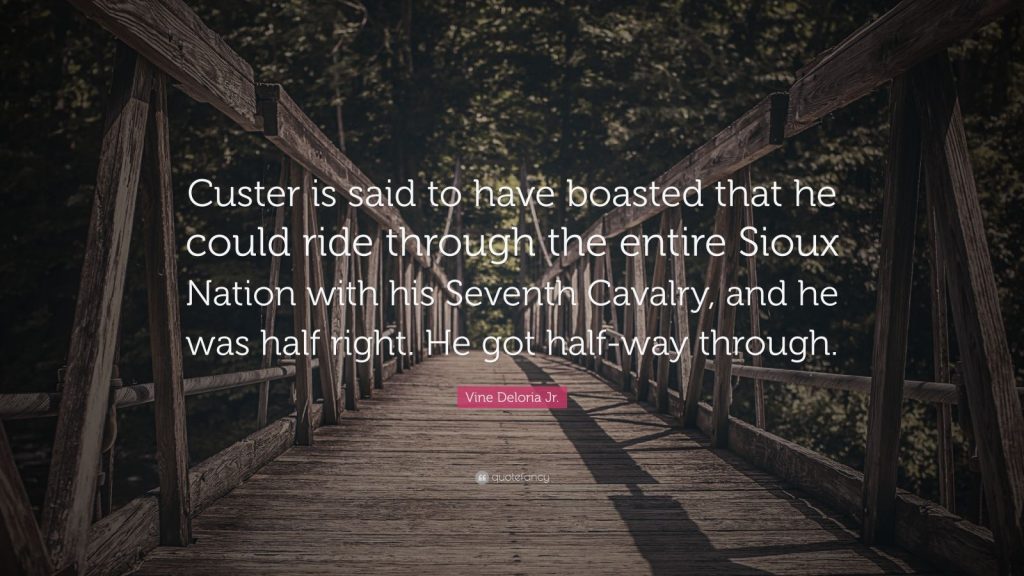 FRIENDS OF THE INDIANS? Really?
FRIENDS OF THE INDIANS? Really?
They more like destroyed Indian culture, eroded sovereignty, wrote treaties they broke, created poverty culture, started the residential boarding schools where children died in the thousands, started the Indian Adoption Projects, and created Third World death camps and concentration camp ghettos called Indian Reservations. With friends like that, who needs enemies?
Got Your Papers?
‘Terrible and disgusting’: Decision to close National Archives at Seattle a blow to tribes, historians in four states
Josh Wisniewski, of Homer, Alaska, is an anthropologist who works for numerous tribes and is tribal anthropologist for the Port Gamble S’Klallam Tribe. He understands the pain of losing his state’s archives. In 2016, the National Archives facility in Anchorage was closed, and millions of pages of documents were moved to Seattle. And now they will be moved again.
“I’ve spent hours and hours in the archives. It has a tribe’s history, governance, relationship with the federal government,” he said.
Although some material is digitized or on microfilm, said Wisniewski, it’s the original materials that he looks for.
“You can see an earlier draft of a treaty,” he said. That’s important because it’s happened that a tribe was listed in an early draft but by mistake not in the final version of a treaty.” (Seattle Times Jan. 25, 2020)
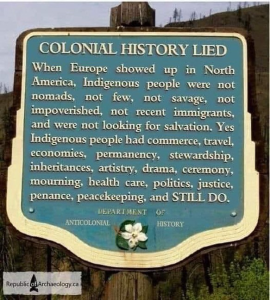 HOW MANY YEARS?
HOW MANY YEARS?
How many years did the Mashpee Wampanoag in Massachusetts petition for federal recognition—30+ years? Yes.
Do Eastern Tribal Nations today (Wampanoag, Pequot, Mohegan, Paugussett Pequot, Narragansett, Abenaki, Passamaquoddy, Nipmuc and Schaghticoke) trust New England’s crop of white historians and anthropologists? Hardly. Members of these tribes will tell you: Better to stay invisible. Yet these tribes and families have their own ancestral charts and memories and some did seek but failed to get federal recognition from the American government.
One Schaghticoke elder told me about her anthropology class in Connecticut, when her professor said all Indians in the east were dead. Yet she was sitting right there, taking his class.
Documentation (old papers) is and will always be an issue in the east. What was written from a historic tribal perspective, and who paid any attention to that?
What about being born tri-racial? (Mixed as Indians + Black + Euro) Good luck documenting that. Pass as white? Sure, hope you can. Census records listed Pequot and Mohegan tribal members are black, not mixed.
And western tribes have writers like Delphine Red Shirt (Lakota) who wrote an op-ed “These are not Indians,” writing about the Mohegan and Pequot who are federally recognized tribal nations. Wait. It’s not about how we look, Delphine. I had several Native writers and journalists from eastern tribes respond to her opinion in several issues of the Pequot Times when I was editor.
And the Yale Indian Papers Project founder Paul Grant-Costa said publicly that every tribal nation in the EAST would finally be able to get federal recognition with all the documents they’d amassed, real proof, once their massive project was complete. Why didn’t we read about this in newspapers? Hmm… that was maybe 20 years ago. Maybe that project didn’t get the funds they needed to continue. Hmmm…Why not?
(update) The Native Northeast Research Collaborative (formerly The Yale Indian Papers Project) is an inclusive digital humanities endeavor that engages tribes, scholars, educators, students, and the general public in the study of the Native presence in the Atlantic Northeast. VISIT: https://www.thenativenortheast.org/about.html
Indians on the east coast have a rich history few Americans know about… tribes had August Meeting to keep up with births, deaths, marriages, goings on with other tribes… we call them socials and pow wows. The Pequot had several socials when I worked for them. Their cousins, the two Eastern Pequot bands, were denied federal recognition even though they’d kept numerous records in family bibles over two centuries. Wasn’t that proof enough for the Bureau of Indian Affairs? No, it wasn’t. And the Schaghticoke were denied too. (The seven criteria for federal recognition are pretty tough for eastern tribes since there are three hundred + years to document leaderships and continuity. Lots of commentary has been written about this.)
Essentially the American public has been bamboozled by the lack of history and doesn’t even know they were. Eastern Tribes have had elders die after years fighting valiantly for tribal recognition, for an accurate account of their lives and their early contact with the invaders and how the eastern tribes still maintain their lands and have treaty rights. These elders die trying but without enough accurate history (on paper) for Americans to believe. I met many of them.
The Treaty of Hartford was signed in 1637 and a different version was found hiding in the British Museum 20+ years ago. That discovery of a piece of paper in the UK didn’t make any headlines in New England newspapers.
(The final act of the Pequot War was on September 21, 1638, when Miantinomi (Narragansett Sachem), Uncas (or Poquiam, Mohegan Sachem), John Haynes, Roger Ludlow and Edward Hopkins signed a tripartite treaty. Known as the Treaty of Hartford, the articles of agreement specified: Forbade any followers of Sassacus (Pequot Sachem) to be called Pequots.)
(1588–1649) Overseer (1637–1649) Slaves: The wife and two unnamed sons of Pequot Sachem Mononotto. At least four other unnamed Indigenous people, two men and two women. https://www.thecrimson.com/article/2022/4/26/harvard-legacy-of-slavery-report/
You will find more about the Pequot War here: http://pequotwar.org/2009/10/the-pequot-war/.
All that American history no one knows.
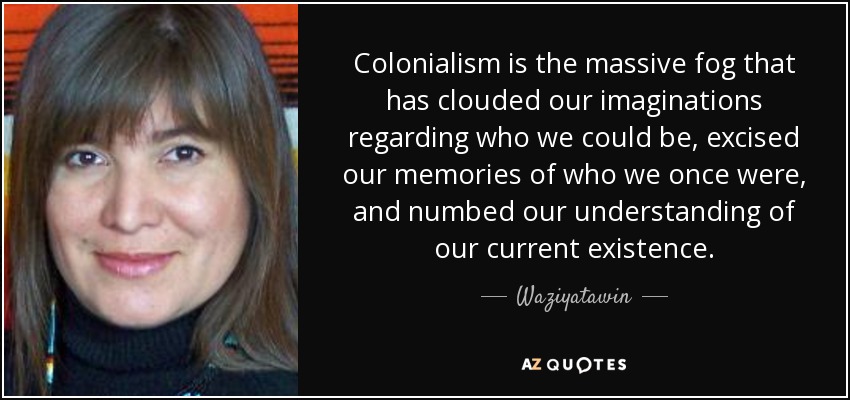
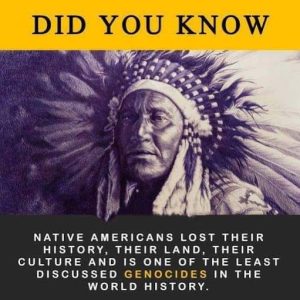 You can’t make this stuff up
You can’t make this stuff up
In 1834, a group of politically powerful and patriotically inclined white men formed the Improved Order of Red Men. Modeled after their (deluded) perceptions of Indigenous cultures, members of the fraternal organization, which included influential figures such as Warren G. Harding and Theodore Roosevelt, would dress in redface and perform “sacred” rituals—a demonstration of not only their affiliation within the brotherhood but also with the land they claimed as their birthright.
WARNING: GRAPHIC VIOLENCE
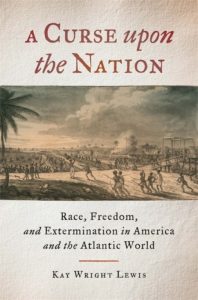
Very Expensive History
If plain old Americans don’t read, racism and division will continue, ignorance wins, and no one knows shit about the founding of this country. Most Americans don’t know how slave owners killed their slaves without mercy, just to keep the rest in terror, scared for their lives and their children’s lives. If we knew how they killed them, would we care? You don’t want to throw up your lunch, I’d bet.
“Gen. Charles LeClerc wrote the French monarch Napoleon: We must destroy all the Negroes of the mountains, men and women, and keep only children under 12 (then import new ones.) So the French would need to inspire great terror.” That is what they did.
One example of torture: “William David, free negro, convicted and confessed. He cut his own throat. His dead body was dragged through the streets behind a horse, by one leg, thereafter hanged on a gallows by a leg, and finally taken down and burned at the stake.”
Another example: “Accounts were published and distributed in all the English territories, as many of the first settlers in South Carolina were from Barbados. There was also great comfort in the reports that the “numbers of those that were burned alive, beheaded, and otherwise executed for their horrid crime (of rebelling their enslavement.)” Slaves (Indians and Africans) were tortured, worked to death, starved, whipped, and occasionally killed by whites who threw them into boiling vats of sugar.
For years and years I searched for the books that mention what happened to tribes in the east, how they were loaded on boats and sold into slavery on the islands. I met people from Bermuda who are relatives of these Eastern Indians who were enslaved.
Why did I read A CURSE UPON THE NATION: RACE, FREEDOM AND EXTERMINATION IN AMERICA AND THE ATLANTIC WORLD?
I’m not a teacher. I didn’t have to read this book. But I read it so others might try—but the truth is bloody in its retelling of real life. Most worrisome, the information in this book is too expensive for a normal person to buy. The book costs $64.95 hardcover and $28.95 paperback. So I bought the paperback used but I get that this kind of history is not for mass consumption. It’s way too real, too difficult, too stomach-turning hard and impossible to read even one chapter in one sitting.
The university press made it very expensive… so we wouldn’t buy it? Not exactly. We are not supposed to know.
One reviewer wrote: “It will now be impossible to recount the history of race in America without taking into account Lewis’s important contribution.”—Stephen E. Maizlish, Civil War History
The author and professor Kay Wright Lewis did an amazing job finding sources for the killing-spree across America and in slaver territories like Haiti. She did her homework. Her book is not hard to read. Not at all. It’s agonizing. But the University of Georgia Press made sure only historians would read it. That’s the point, right?
I get it. Massacre all history.
(I am reading AMERICAN HOLOCAUST by David E Stannard in 2022.)
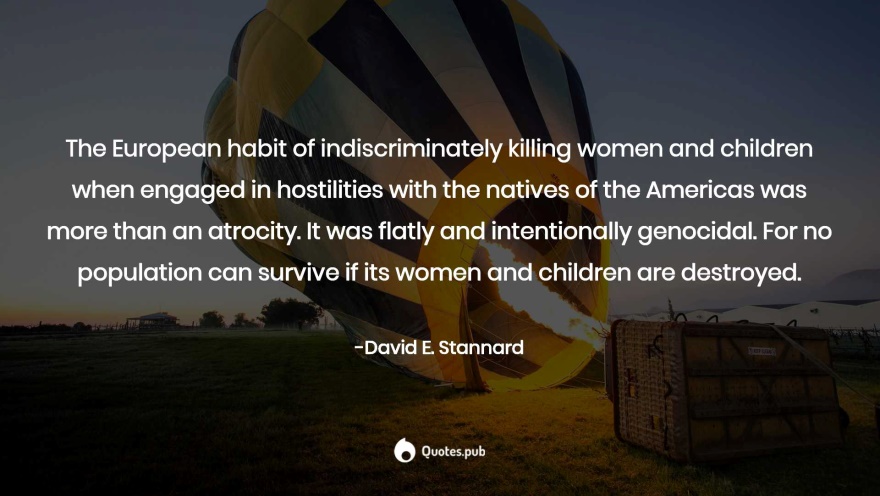
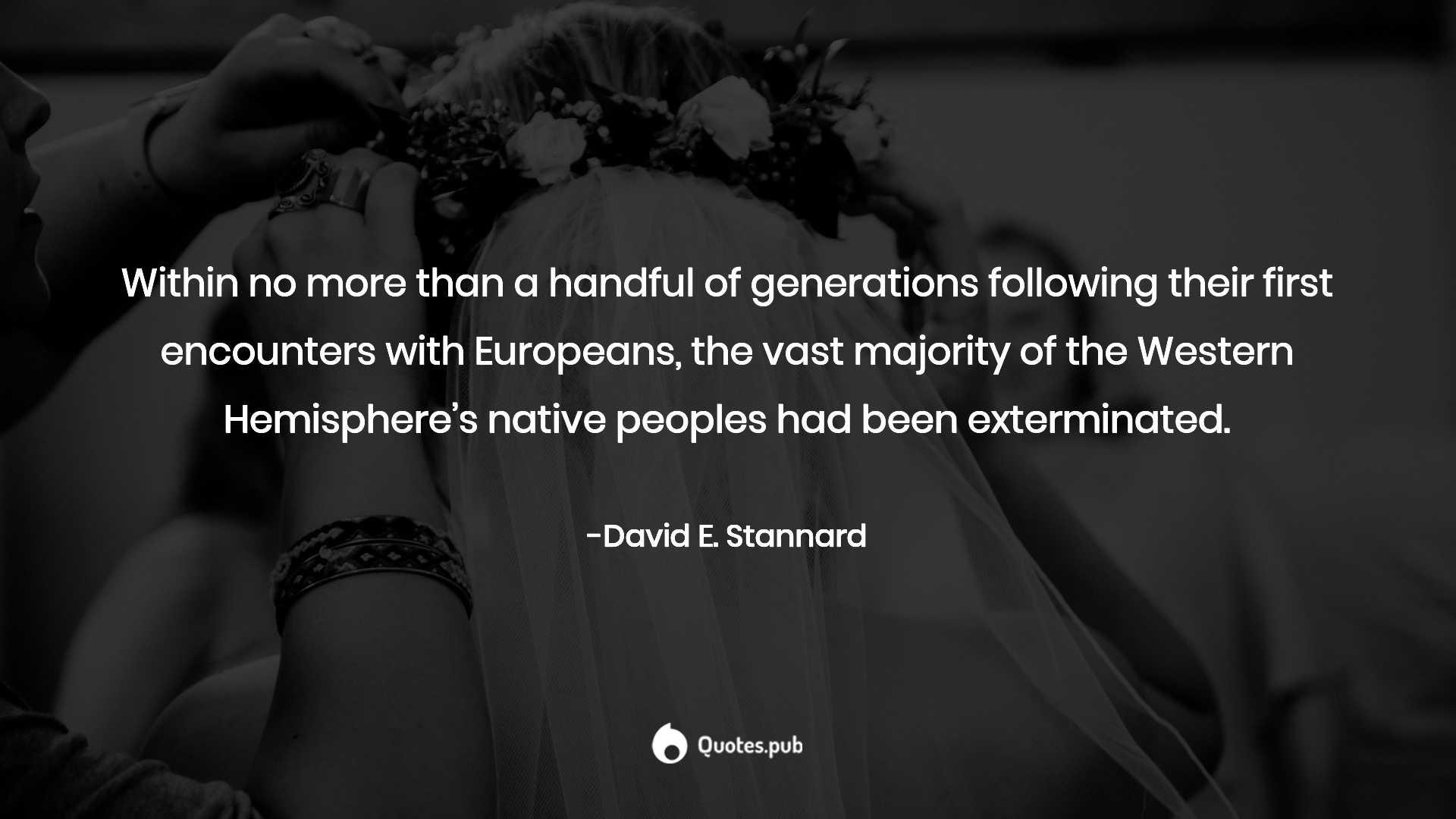 Contrary to a notion that has become fashionable among American historians, the concept of race was not invented in the late eighteenth or nineteenth century. Indeed, systems of categorical generalization that separated groups of people according to social constructions of race (sometimes based on skin color, sometimes with reference to other attributes) and ranked them as to disposition and intelligence, were in use in Europe at least a thousand years before Columbus set off across the Atlantic. —AMERICAN HOLOCAUST author David E. Stannard
Contrary to a notion that has become fashionable among American historians, the concept of race was not invented in the late eighteenth or nineteenth century. Indeed, systems of categorical generalization that separated groups of people according to social constructions of race (sometimes based on skin color, sometimes with reference to other attributes) and ranked them as to disposition and intelligence, were in use in Europe at least a thousand years before Columbus set off across the Atlantic. —AMERICAN HOLOCAUST author David E. Stannard
Bull Leaping and Slave Traders
Have you heard of synchronicity? Let’s connect some dots to slavery and yes, to bull leaping. In Ancient Crete: we see the bull is everywhere (in frescoes, art and jewelry). The Elite wore gold rings engraved with bulls! Bull-leaping was a centerpiece of Minoan life. (For some reason, I am thinking Minoan slaves were the actual people who would leap over the bulls: for pure entertainment, of course.)
I watched WHAT ON EARTH (Season 8, Episode 5) about ancient ruins (just like Rome) found in Peru. Really? What were “they” doing there? Grabbing slaves and gold and anything valuable, as usual.
APPARENTLY Spain told their soldiers that any new conquest/civilization needed to be built/rebuilt in Roman fashion, even in Peru. (How typical of these ruling types. Roman-Minoan-Egyptian—they are all the same greedy Invisibles.) These ruins in Peru are 1000 years prior to Columbus’s journey (to the new world). Always royal and elitist, King Phillip II of Spain, wrote “Laws of the Indies.” They are building Codes and Slaves codes, essentially.* (It’s sad and tragic what greed and the Invisibles will destroy.)
Today Spain’s churches and cathedrals are crammed full of Peruvian gold. In the end of the episode, the Peruvian “Cloud People” in the Andes were at war with the Incas and few survived the blood bath of conquest of Spain, slavery and mining.
My conclusion: The Invisibles traded in gold (and precious metals) and people. It’s my best guess that the INVISIBLES are the ORIGINAL slave traders and were looting gold and copper and silver and salt mines across the planet. That is how they made their obscene wealth. And how they remain out of sight and invisible.
On Season Seven: Episode 10, in Palenque every June, they hold a BULL FESTIVAL. This is a former slave port, and they claim one million slaves were brought to the foothills in northern Columbia, to Palenque, and human captives were kept in Slave Pens, a circular holding cell. Just like the ancients, today the Columbian people (former slaves mixed with indigenous Columbians) try to grab the bull by the horns, which is like the Minoan sport of bull leaping. It’s not known how many people died trying to do this, because it is gruesome.
(We’ve all heard of bull riding and bullfighting. But bull-leaping? For Spaniard José Manuel Medina, however, bull-leaping, or “RECORTE,” is an adrenaline-filled way of life. In Recorte competitions, bull-leapers invite charging bulls toward them in order to evade the animals via side-steps, flips and acrobatic turns. A panel of judges scores their moves. Unlike bullfighting, no harm is done to the animals. Enter the ring … if you dare. Watch: https://youtu.be/_vqyPbFccjo)
Bulls and Bull-leaping in the Minoan World
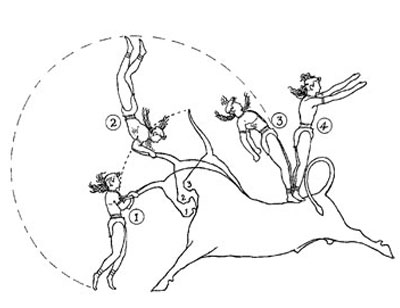
(2011) A deep-rooted tension between the wildness of the bull and the need to master it also appears to underlie the most famous Minoan institution involving bulls: bull-leaping. The conclusion of Younger’s 1976 study sums up the connection between artistic representations and the performances they recall: “In conclusion, bull-leaping begins to appear in artistic representations toward the beginning of the Late Bronze Age in Crete and on the Mainland.”

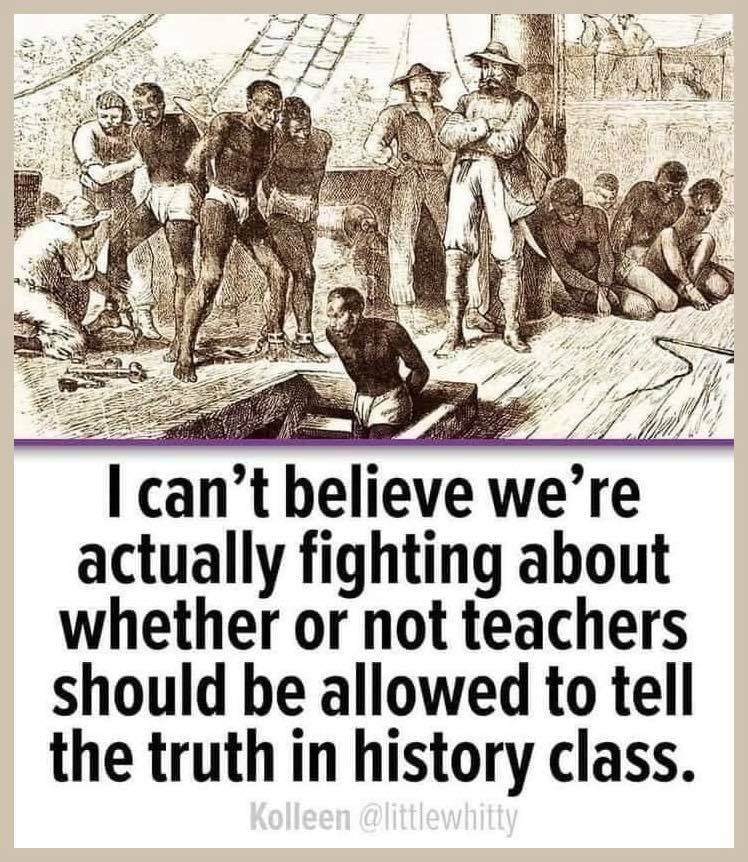
HISTORY SNOBS?
(Wearing my heavy history hat in December 2016)
My late cousin Dr. Charlie Bland once said he’s in the fourth stage of grief—“If we can laugh it means we are in the Kubler-Ross 4th stage.” I do think we need to laugh …and cry.
In 2016 I watched a live feed history symposium at Brown University in Rhode Island. First, I was overwhelmed and overcome with information. I took copious notes. I was very pleased how Native American Slavery was talked about, too. I was happy to see people of color from around the world giving presentations on their own historic truths. (I even posted a few photos on Instagram in 2016 since this was historic!)
Then I got so angry. Several things hit me like bricks!
I’m not a history snob. I’m a story-lover. I can’t get enough of: where/there, when/then, what/that.
I watched (with baited breath) the live feed of the history symposium at Brown University in Rhode Island in 2016. (This was long before Zoom.)
It’s official title: SLAVERY AND GLOBAL PUBLIC HISTORY: New Challenges:
Universities across the United States and the world have been forced to confront connections to slavery throughout their histories. From Brown to Yale, Oxford and in South Africa, students, faculty, and administrations wrestle with how to expose, conceal, honor, or memorialize the legacies of slavery. LINK: https://www.brown.edu/initiatives/slavery-and-justice/global-public-history/schedule
Esteemed historians, I’ve met quite a few of them. I remember I was at Yale at a similar symposium in 2000. Casually I asked David Brion Davis an elderly Yale history professor about evidence of Native American slavery—he looked right through me. He turned away—no response at all. Why? Was I invisible? I introduced myself as editor of the Pequot Times. I think it was the question, not me, that stunned him silent. (Abrupt, indeed he was.)
History snob? Oh yeah. Typically old white guys give their decades of purported research in their lengthy presentations. (Yawn.) Their expansive expensive exhausting history books, several hundred pages, of course, cost way too much time and money. (Other historians buy them, sure.) They talk to each other, not us. They owned all history but not anymore.
BACKGROUND
After that Yale symposium in 2000, I asked Mashantucket Pequot Museum Research Center Director Kevin McBride for his paper Genocide and Enslavement of the Pequots. Sober and stunning stuff, I planned to publish it in the Pequot Times (in parts) and I did. Let’s say that history of New England Indians was pretty much unknown—unwritten, except for Kevin’s work and the museum. I was on a mission to publish local tribal history, as much as I could get my hands on, every month in the tribal newspaper. (We had thousands of subscribers from across America and Europe, including the Bureau of Indian Affairs.)
Later in 2013, Yale’s Gilder Lehrman Center had another symposium: Indigenous Enslavement and Incarceration in North American History. (I was there!) They said it was the most attended symposium in their history. (Hmmm…Wonder why?) http://glc.yale.edu/indigenous-slavery
The auditorium was packed with New England Indians, all ages, all ethnicities, and many New Englanders too. It was a beautiful sight.
Many of us had lost interest in “his-story” when we were in grade school, age 10, 11 and 12—when we didn’t see ourselves “within” history. Without that, we didn’t trust it. Their version clashed with our family story or there was no history at all. Textbooks bored us, historians failed us miserably, and for that reason, many people today won’t crack open a history book, period. (Unless you have that Ivy League education.)
WHY NOW… WHY TODAY?
At Brown University in December 2016, they gathered some of the world’s best and most brilliant scholars, museum curators and academics.
I heard Yale’s David Blight ask panelists, “Why Now?”
I’d ask, “What took you so long? Why did you make history so white, so tainted, so discriminatory, so one-sided, so racist, so colonized? You expect us to care about you now? You were/are the purveyors of one-sided fallacies. You built the racial divide that exists in America and you lost many of us long ago.”
I wonder if they realize how much they suppressed and oppressed history by keeping it theirs, locked up in academia archives, in costly books, in their versions.
(Oh, our Indian bones are still locked up in their dusty drawers, too, in those same Ivy League Schools. To them Indians are the distant past, relics, disappeared. Some of these schools are sweating the revelations how they profited from the slave trade, too, of course.)
So, how DO you keep violence alive in a museum exhibit or book but not make people throw up or pass out?
Very carefully.
In the past 20 years, there has been an EXPLOSION of books on slavery and the slave trade. New movies and historical documentaries are in the works. Digital websites and online exhibits are popping up worldwide.
Things are changing in a big way, at least concerning the African slave trade. (Finally!)
I learned there is a new industry called “MEMORY TOURISM” and “Dark Tourism” when people want to see torture, murder, death, suffering, cemeteries, insane asylums and crimes of humanity/inhumanity. (REALLY!)
Some of the new Haunted Slavery Ghost Tours are worse than erasure—they are making a mockery of the slave experience, making money off it. These tour guides are teaching children dehumanized worthless bloody crafted-fictions! (Again!)
But we are hungry for history, one participant said. The significance of story creates a hunger and longing in us for truth, to find our own ancestral past.
So who does the job of teaching history?
America is filled with small and big history museums and historical societies. This symposium at Brown was about finding new ways to reach the broader public. Panelists talked about “Truth Plans” and agreed the public (you and me) make sense of the past with artifacts and story. A Brazilian presenter even talked about decolonizing their museums, showing slaves and owners in a truthful way.
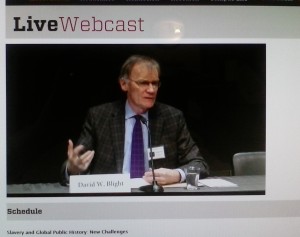
Memory Studies are a new big thing. Memory is emotional, so history done right is capable of invoking a wide range of emotions. PTSD, coined in 1983, is concerning these folks, conceptual in therapeutic public intervention, to create empathy but not traumatize.
Truth Plans? Confronting Traumatic History? It’s going global via new Heritage Tourism.
“Why Now? Are we now in the place of long-term reckoning (on the horrific and catastrophic reality of people trapped in the global slave trade)?” Yale panel moderator David Blight asked.
I still wonder who invented slavery. They didn’t answer that.
(But in 2022, we know it was THE INVISIBLES!)
“The great force of history comes from the fact that we carry it within us, are unconsciously controlled by it in many ways, and history is literally present in all that we do.”—James Baldwin, The Price of the Ticket: Collected Nonfiction, 1948-1985
Slavery in historical perspective: Slavery was the cornerstone of the colonization of the Americas. Of the ten million or so people who crossed the Atlantic before 1800, about eight and a half million—roughly six of every seven people—were enslaved Africans. By the time the transatlantic trade was finally suppressed in the 1860s, a total of 10 million to 12 million Africans had been carried into New World slavery, while an estimated two million more had died in the passage.
http://www.brown.edu/Research/Slavery_Justice/documents/SlaveryAndJustice.pdf
I’m sure plenty of you are aware that history snobs have controlled the narratives a long long time and created divisions in the way we think. You’d guess right that they did do this on purpose.

